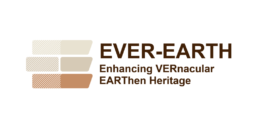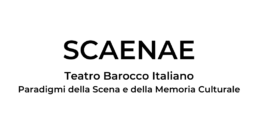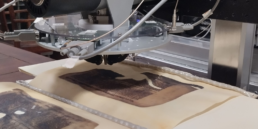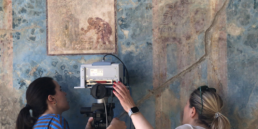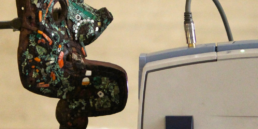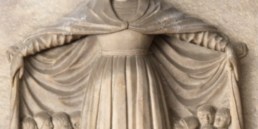Built hEritage sustAinable CONservation
PRIN 2022 scorrimento
Acronym: BEACON
Description
The relationship between climate crisis and heritage has for years been seen by the conservation sector only in terms of impacts, and by policymakers as a ballast of constraints and complexities to mitigating actions. The project BEACON thanks to the advanced experience gained by the research groups from some of their most important projects, such as BEEP, proposes to consolidate and test a methodology for the analysis and design of built heritage energy and environmental improvement interventions based on Heritage Building Performance Simulation (HBPS) and Heritage Building Information Modeling (HBIM), transferring this theoretical and operational advancement to the entire construction sector through the development of a Playbook and a tailored Learning Outcome Framework for the public and private actors involved.
The project is coordinated by the CNR ISPC, with the collaboration of the Mario Lucertini Department of Business Engineering of the University of Tor Vergata, the Department of Architecture of the University of Ferrara and the support of the MOLAB mobile laboratory, part of the European Research Infrastructure E-RIHS, already involved in a comparative experimentation of diagnostic tools with the Department of Tor Vergata.
For BEACON, the built heritage is a key resource to fight climate change and Italy is the ideal laboratory for this fight. Environmental and energy improvement interventions on historical buildings can support the green transition with their share of energy efficiency and renewable energy production and their role as a beacon for the construction industry. Indeed, addressing the complexities related to such interventions means stress-testing new technologies to be extended to the entire construction sector, strengthening technology transfer. Heritage-related scientific advances and the potential for disciplinary cross-fertilization are another key push in this direction. Moreover, the capacity of built heritage to engage and mobilize society, strengthening social inclusion, is crucial to achieve the “rapid, far-reaching and unprecedented changes in all aspects of society” required by the Intergovernmental Panel on Climate Change.
Italy, thanks to its restoration schools, the variety of climates and typologies of historical buildings, and the leadership in the international scientific literature on the energy and environmental improvement of the built heritage, has a unique opportunity to improve the adaptation, mitigation and conservation of its cultural heritage, capitalizing on a renewed awareness of society and the urgency to act. However, planning these interventions requires much more attention than any other standard action on existing buildings. The objectives of the research community in this delicate phase should be to address this complexity by producing robust workflows, testing them on pilot cases and working as quickly as possible on technology transfer models able to reach the market “in time” to avoid that this opportunity turns into negative pressure and damage.
Objectives
- Advance the scientific knowledge on the application of Building Performance Simulation on built heritage.
- Update of our existing process guideline to facilitate decision-making for the energy and environmental improvement of historical buildings.
- Support the choice of the best simulation approach, making the specialistic knowledge accessible to technicians in the sector.
- Define the upskill of professionals required for implementing the energy and environmental improvement of historical buildings.
Expected results
- Scientific publications.
- Playbook to transfer the methodology to the AEC sector.
- Learning Outcome Framework (LOF) to help education and training bodies in the definition of the main thematic needed to address the upskill of both public and private professionals.
Calcerano, Filippo, Stavroula Thravalou, Letizia Martinelli, Kristis Alexandrou, Georgios Artopoulos, e Elena Gigliarelli. «Energy and Environmental Improvement of Built Heritage: HBIM Simulation-Based Approach Applied to Nine Mediterranean Case-Studies». Building Research & Information, 2023.
Cornaro, Cristina, Gianluigi Bovesecchi, Filippo Calcerano, Letizia Martinelli, e Elena Gigliarelli. «An HBIM Integrated Approach Using Non-Destructive Techniques (NDT) to Support Energy and Environmental Improvement of Built Heritage: The Case Study of Palazzo Maffei Borghese in Rome». Sustainability 15, fasc. 14 (gennaio 2023): 11389.
Gigliarelli, E., F. Calcerano, L. Martinelli, G Artopoulos, S. Thravalou, e K. Alexandrou. Methodology for the Energy Renovation of Heritage Buildings Using BIM. Rome: CNR edizioni, 2022.
Verticchio, Elena, Letizia Martinelli, Elena Gigliarelli, e Filippo Calcerano. «Current practices and open issues on the whole-building dynamic simulation of historical buildings: A review of the literature case studies». Building and Environment 258 (15 giugno 2024): 111621.
Alexandrou, K., L. Martinelli, S. Thravalou, E. Gigliarelli, Artopoulos, G., e F. Calcerano. «Heritage BIM and performance simulation interoperability: methodological insights from representative case studies in Cyprus and Italy». Architectural Engineering and Design Management, 2025.
Di Biccari, Carla, Filippo Calcerano, Francesca D’Uffizi, Antonio Esposito, Massimo Campari, e Elena Gigliarelli. «Building Information Modeling and Building Performance Simulation Interoperability: State-of-the-Art and Trends in Current Literature». Advanced Engineering Informatics 54 (1 ottobre 2022): 101753.
Gigliarelli, \E., F. Calcerano, F. D’Uffizi, C. Di Biccari, G. Mangialardi, e M. Campari. «From Heritage BIM to BPS, a computational design-based interoperability approach». In Building Simulation, Rome,2019.
Project information
- Funded by: Ministero dell’Università e della Ricerca
- Call: Bando PRIN 2022 – Decreto Direttoriale n. 104 del 2-2-2022 – Disposizioni per lo scorrimento delle graduatorie”
- Start date: February 4, 2025
- End date: February 3, 2027
- ISPC Scientific coordinator: Filippo Calcerano
- Project Leader: CNR ISPC
- Partners: Dipartimento di Ingegneria dell’Impresa Mario Lucertini dell’Università di Tor Vergata; Dipartimento di Architettura dell’Università di Ferrara; E-RIHS MOLAB
- Budget: € 222.970
For further information on the research topic, visit our Groups & Labs
